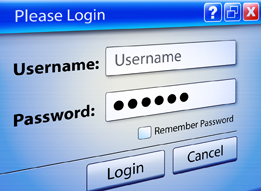
Wavebreak Media/Thinkstock
Have you ever been a victim of identity theft? This kind of theft is increasing in Canada, so there is a chance that you might be a victim. What are some of the ways in which you identify yourself? Probably the first thing that comes to mind is your name, but there are many other ways in which you could potentially be identified. Here is a partial list:
- Social Insurance Number (SIN)
- license plate number
- phone number
- bank account number
- passport number
Personal identification is any data than can be used to identify an individual. Much of this information is an arrangement of numbers or a grouping of numbers and letters. In Module 8 you will learn how to determine the available number of these arrangements and discover what makes some personal identification more secure than other forms.
In this module you will investigate the following questions:
- How can you solve problems involving the number of possible arrangements of personal information identifiers?
- How can you expand powers of a binomial?
To investigate the module questions you will focus on the lessons and questions in the table.
Lesson |
Topic |
Lesson Questions |
1 |
Fundamental Counting Principle | How can you use the fundamental counting principle to determine the number of outcomes in a given problem? |
What is factorial notation and when is it used to solve problems? |
||
2 |
Permutations | How can you determine the number of permutations when not all objects need to be arranged or some of the objects are identical? |
Are some counting methods more efficient than others in solving certain problems? |
||
| How do you solve equations involving factorial notation? | ||
3 |
Combinations | What are the similarities and differences between permutation and combination problems? |
How are problems involving combinations solved? |
||
| How do you solve equations involving combinations? | ||
4 |
The Binomial Theorem | How do the coefficients of the terms in the expansion of (x + y)n relate to the terms of Pascal’s Triangle? |
| How can you expand a binomial of the form (x + y)n without multiplying all the factors? |

Hemera/Thinkstock
An aspect of personal identity is how you can be uniquely and efficiently identified in society. Many of the examples you will study in this module revolve around how people identify themselves through numbers—including license plates, SINs, phone numbers, PINs, or passwords.
In the Module 8 Project: Creating the Ultimate Password, you will apply your understanding of permutations, combinations, and the binomial theorem to explore how good Internet passwords can be developed. You will also research Internet identity theft and develop a list of facts and tips to help people avoid having their identity stolen.
Note: Loading times for video and other media may vary depending on your Internet connection. Please be patient.